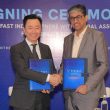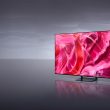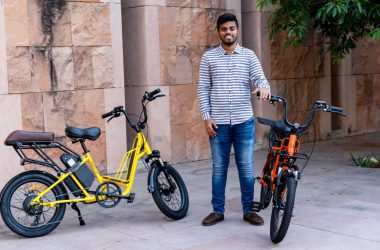Can you please tell us about your background and experience in the automotive industry?
As the Managing Director of Croyance Automotive, I have over six years of experience in the automotive industry. I started with Croyance and gained extensive knowledge of the industry’s dynamics and trends in the automotive sector.
What is your vision for Croyance Automotive and how do you plan to achieve it?
My vision for Croyance Automotive is to establish it as a global leader in innovative and sustainable mobility solutions. To achieve this, I have outlined a strategic plan that focuses on three key areas: product innovation, operational excellence, and customer-centricity. By investing in research and development, fostering a culture of innovation, and leveraging advanced technologies, we aim to deliver cutting-edge products that exceed customer expectations. Additionally, we are streamlining our operations, optimising our supply chain, and nurturing strong relationships with our stakeholders to ensure efficient and sustainable growth.
Can you provide an overview of Croyance Automotive’s current product lineup and the key features that differentiate them in the market?
Croyance Automotive’s current offerings are in the Cargo segment only, catering to different areas of the market. Our product lineup includes mid-range cargo vehicles, one-ton cargo vehicles and pick-up vans. One of the key features that differentiate our vehicles is their advanced electric powertrain technology, which offers exceptional range, efficiency, and performance. Additionally, our vehicles incorporate state-of-the-art safety features, cutting-edge connectivity options, and driving experience.
In terms of electric vehicles and sustainability, what initiatives is Croyance Automotive undertaking to align with the industry’s shift towards cleaner technologies?
Croyance Automotive is fully committed to embracing electric vehicles and sustainability as core pillars of our business. We are investing heavily in research and development to advance electric powertrain technologies, improve battery efficiency, and enhance charging infrastructure. Furthermore, we are actively collaborating with renewable energy providers to ensure the use of clean energy sources in our manufacturing facilities. Additionally, we are implementing recycling programs for battery components and exploring innovative ways to minimise our environmental impact throughout the product life cycle.
How do you maintain strong relationships with stakeholders, such as suppliers, partners, and customers, and how do you leverage those relationships to benefit Croyance Automotive?
Building and maintaining strong relationships with stakeholders is a top priority for us. We foster open and transparent communication with our suppliers, ensuring a collaborative approach to meeting quality standards and delivery timelines. With our partners, we cultivate mutually beneficial relationships through joint development projects and shared expertise. To satisfy our customers, we actively seek their feedback, engage in personalised communication, and provide exceptional after-sales support. These strong relationships enable us to access the latest technologies, optimise our supply chain, and continuously improve customer satisfaction.
How do you assess the market demand and potential for Croyance Automotive’s new product launches, and what steps do you take to mitigate any risks associated with market acceptance?
The market assessment is a critical aspect of our product planning process. We conduct comprehensive market research, analysing customer preference.
From your perspective and experience, do we have the right and adequate manufacturing ecosystem in the country to meet the fast- growing local and international demand for EVs?
Electric vehicles have been the talk of the town at this time now. With the developing infrastructure, supporting the development of effective charging infrastructure is the main key for the masses to start the adoption of EVs. New solutions like fast charging and battery swapping will play a major role in India’s major Ev adoption. OEMs like us are committing to launching new products, technologies and innovations in the field for the so-called electric revolution.
Do we have adequate infrastructure and trade network that can support battery production?
To what extent do we depend on the international markets for components and raw material procurement? Battery manufacturers definitely need proper infrastructure for the development of batteries. The most important thing is the supply of the technology and the raw material. Another major factor is skilled workforce. That is to be backed with technology then only the best outcome is possible. The most important thing is sufficient raw materials because for manufacturing any battery, a sufficient supply of raw materials is needed, which is a major challenge. In the current scenario, as for raw materials we are still dependent on the international market.
What are the other main reasons for India’s lack of charging infrastructure and what can be done to boost and expand it?
Electric vehicles are in the developing stage as well as charging infrastructure too. Electric vehicles are in the advancing stage increasing demand and sales of electric vehicles will definitely pave the way for the same, for deploying charging stations less documentation and fast approval are needed with proper backup by a subsidised rate of power.
What are the top reasons/factors behind the two-wheelers and three-wheeler segments leading other segments in adoption, with the four- wheelers being the slowest one to catch up?
Two-wheelers and Three-wheelers are indeed leading in this segment but when it comes to the four-wheeler passenger and four-wheeler cargo segment the major challenge is the range anxiety. People expect four-wheeler cargo vehicles to be on the highway like an ICE vehicle, but due to the lack of charging infrastructure, it has had less impact. But let me tell you, cargo vehicles also have various segments, for intercity and intracity. As far as intercity is concerned, we need a backup of charging infrastructures but for intra-city movement, many OEMs have started working on it. Croyance Automotive is ready with its ELECRO J0.7 for intra-city movement with a loading capacity of up to 800kg and up to 150km range in a single charge with smart BMS to monitor the battery system. So, in the near future, like two-wheelers and three- wheelers, four-wheeler EVs in passenger and cargo segments will create a buzz in the market.
Could you share with us the topmost factors that make EVs environmentally efficient, and how their adoption could not only reduce vehicular emission and environmental pollution as well?
Out of the 20 most polluted cities in the world, three are from India. As per research, passenger travel in individual ICE vehicles contributed to 62 percent of emissions attributed to road transport which is too high. The health effects of this pollution are grave, with 35 percent of the population of India exposed to emissions above the limits, as determined by the World Health Organization (WHO), leading to over 1.24 million deaths annually, very tragic. And nationwide lockdown provided evidence of the role road transportation plays in carbon emissions, between March and May 2020, the levels of nitrogen dioxide nationwide recorded their lowest value in 20 years. 19 out of 20 warmest years have occurred in the 21st century. So the solution to all the above problems is to switch to Electric vehicles. To create a better environment, start working now, and adopt EVs in all possible ways. It is the only solution to solve Environment and economic problems. As it is said, “The future will either be green or not at all.” So what do you choose? Choose green…choose electric.










